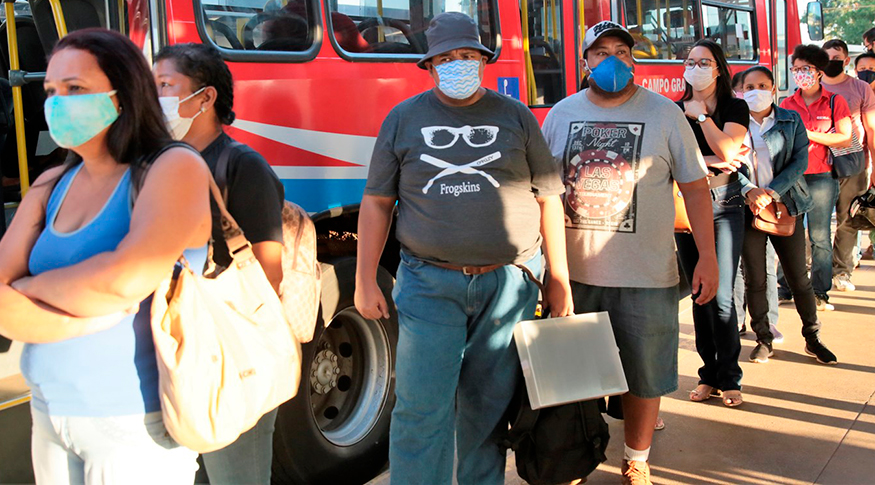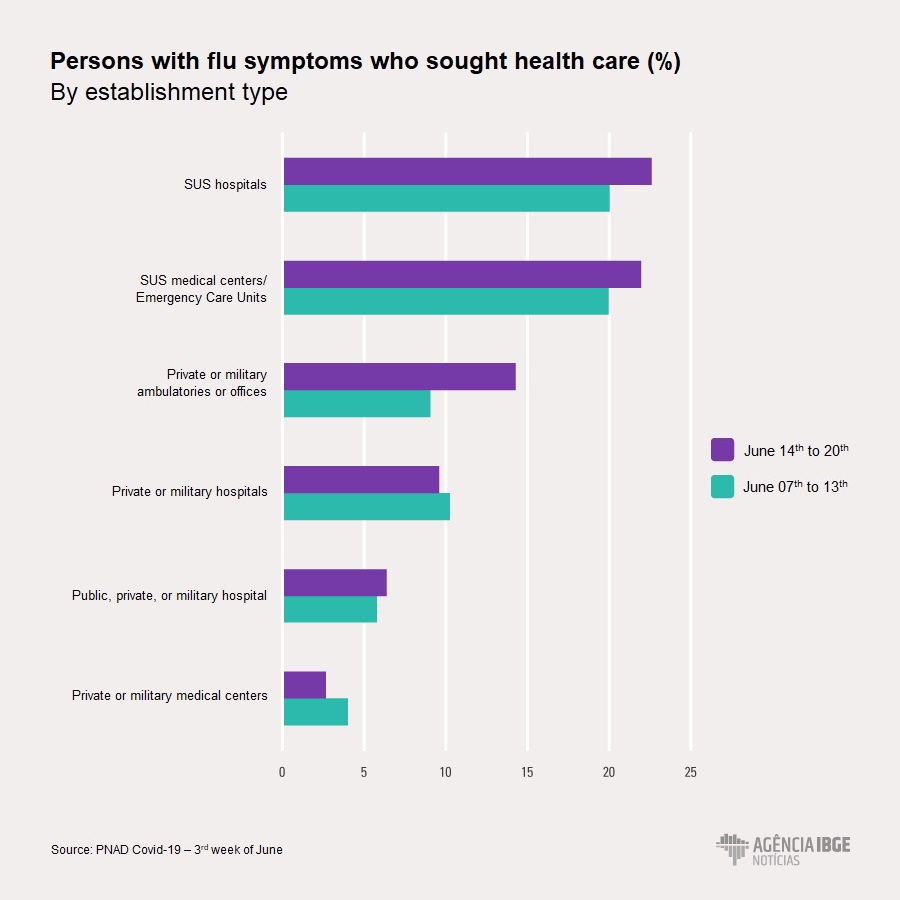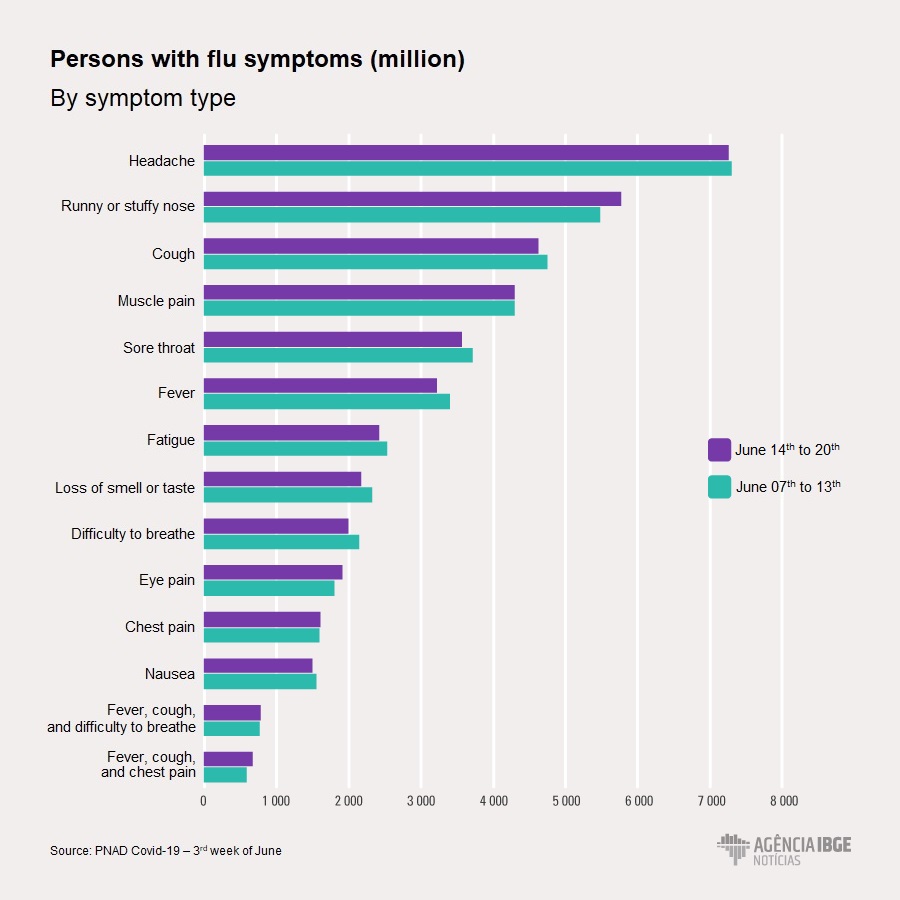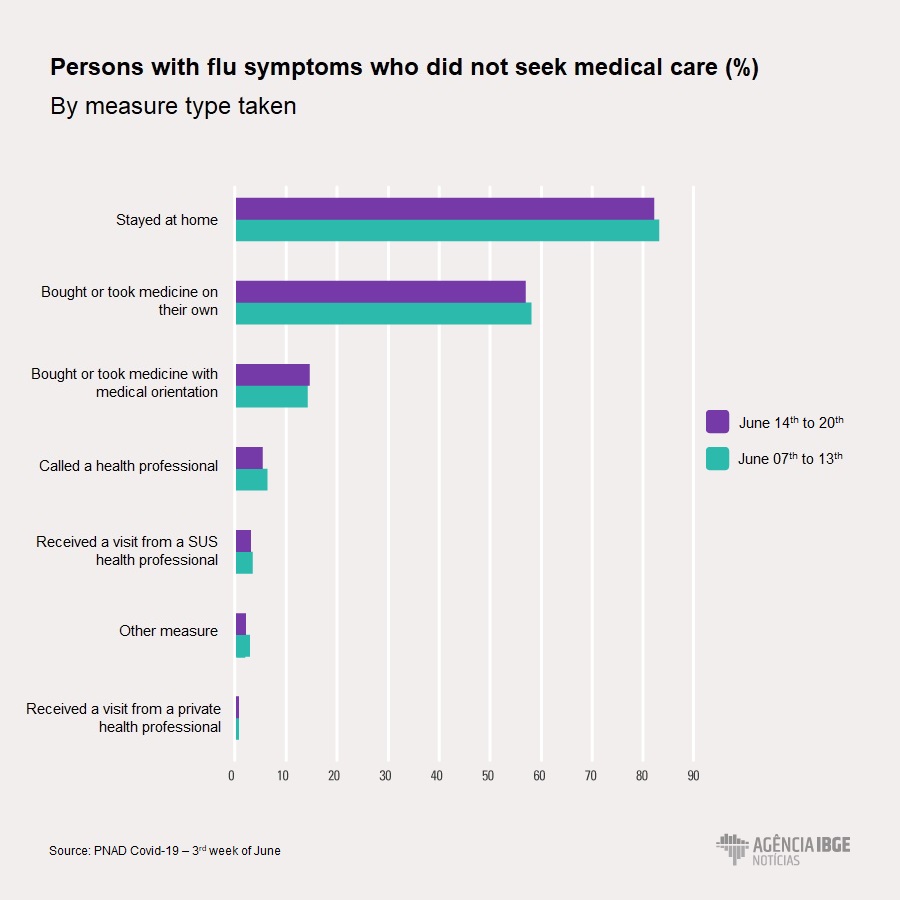PNAD COVID19
More than 1.3 million persons return to work in the 3rd week of June
July 10, 2020 09h00 AM | Last Updated: July 13, 2020 01h44 PM

The number of employed persons who were temporarily away from work due to social distancing remained falling in the third week of June, from 12.4 million to 11.1 million, in the comparison with the previous week, which accounted for 13.3% of the employed persons. With the unemployed population stable, it means that nearly 1.3 million persons returned to work due to the relaxation adopted in some cities of the country.
These data are from the weekly PNAD COVID19, released today (10) by the IBGE.
“In the weekly follow-up of the survey, we verified stability in the employed (84 million) and unemployed (11.8 million) population, despite a drop in the group of employed persons who were not working in the reference week due to the pandemic. This trend repeats in the third week of June in relation to the second week, indicating that these persons continue to return to their work activities”, declares the coordinator of the survey, Maria Lúcia Vieira, remembering that in the first week of May, when this survey started, 16.6 million persons were temporarily away from work.

Vieira also points out that there was a decrease in the number of persons out of the workforce, but who did not look for a job due to the pandemic or lack of opportunity where they live, from 18.2 million in the second week of June to 17.3 million in the third one. That is, with the relaxation of social distancing, for 827 thousand persons, the pandemic is no longer an obstacle to look for a job.
“The population out of the workforce who would like to work (362 thousand) decreased, however the number of those who had the social distancing as the main reason for not looking for a job dropped even more (827 thousand)”, commented the coordinator of the survey. The total number of persons out of the workforce, who neither work nor look for a job, also retreated from 76.2 million to 74.5 million in the first week of May, when this survey started.
In the third week of June, the IBGE estimates that 170.2 million persons were at working age, though only 84 million were employed. This figure remained statistically stable since the first week of May, and it shows that less than half (49.3%) of the persons were working in the third week of June.
Among those employed, 8.7 million worked remotely, which represents 12.5% of the workers not away from work due to the pandemic. This group remains stable since the first week of May (8.5 million).
In contrast, the informality rate retreated to 33.9% in the third week of June, reaching 28.4 million persons. In the beginning of May, they were 29.9 million.
Among the informal workers are those employed in the private sector without a formal contract; domestic workers without a formal contract; employed persons who do not contribute to social security; self-employed workers who do not contribute to social security; and unpaid workers helping a resident or relative.
Search for medical care in the private network increases
PNAD COVID19 also shows that in the third week of June there was an increase in the number of persons that looked for medical care in the health private network. Of the 3.1 million who had some flu syndrome symptom and looked for medical care in the country, 440 thousand persons (14.3%) were in private or military ambulatories or offices in the period. In the previous week, they were 271 thousand persons.
“Although the health establishments connected to SUS (Unified Health System) still are the most sought by persons with symptoms (85%), we observed an increase in the percentage of those who looked for private treatment. This may suggest that with the relaxation there was a change in the profile of the persons who had symptoms, especially in relation to economic conditions”, commented Vieira.
Among the other persons who had some symptom, 43.8% reported to look for treatment in public health centers, 22% in medical centers and another 22.6% in SUS hospitals. In the private network, 2.7% went to private medical centers and 9.6% to private hospitals. In total, 976 thousand searched for treatment in hospitals, either public, private, or military, with 110 thousand being hospitalized.

In the third week of June, 15.3 million persons complained about any of the flu symptoms investigated by the survey (fever, cough, sore throat, difficult to breathe, headache, chest pain, nausea, stuffy or runny nose, fatigue, eye pain, loss of smell or taste, and muscle pain). In the first week of May, 26.8 million were symptomatic.
The symptoms stayed statistically stable in the third week of June, compared with the previous one. Most of the interviewees reported a headache (7.2 million). The second most recurrent complaint was stuffy or runny nose (5.7 million), followed by cough (4.6 million), muscle pain (4.3 million), sore throat (3.5 million), fatigue (2.4 million), loss of smell or taste (2.2 million) and difficulty to breathe (2 million).

Among the persons who had some symptom, 79.8% did not look for any care or health establishment in the third week of June. In contrast, 57.0% took medicines on their own. Other 14.4% took medicines under medical orientation. In addition, 5.2% called a health professional and 2.9% were visited by a health professional from SUS.

PNAD COVID19 is a version of the National Household Sample Survey (Continuous PNAD), carried out with the support from the Ministry of Health, aiming at identifying the impacts of the pandemic in the labor market and at quantifying persons with symptoms associated to the flu syndrome. The IBGE releases the survey on a weekly and monthly basis. The survey is considered one of the IBGE´s Experimental Statistics.


















